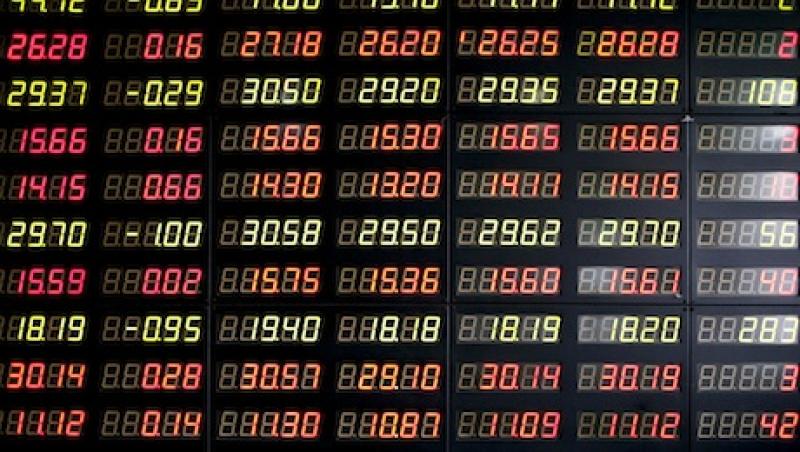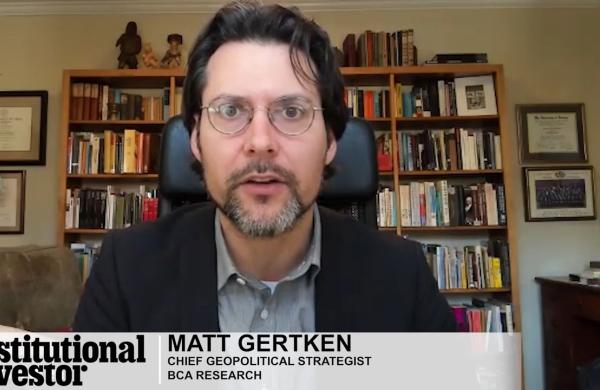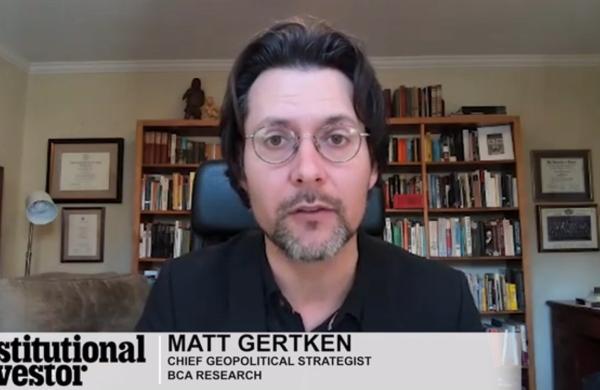The race to zero is going global.
As regulators in the U.S. and Europe clamp down on high frequency trading, exchanges in emerging markets have embarked on an aggressive drive to court high-speed traders. Brazil, Russia and Mexico are at the vanguard of this push, with the major exchanges in each country moving over the past year to put in place the technology and regulatory infrastructure that will facilitate greater volumes of high frequency trading. But will they get growth without the growing pains?
These markets "are going to become a hotbed of high frequency trading," says Alexander Fleiss, chief investment officer and co-founder of Rebellion Research, a New York–based asset management firm that provides research coverage of emerging markets. "They want it there, and they don't mind the volatility."
High frequency trading has become the focus of many of the main controversies that have erupted on Wall Street over the past five years, with this species of ultrafast, algorithm-driven automated trading blamed for a rise in market volatility and a number of well-publicized technology spasms, from last summer's Knight Capital Group debacle, when errors in insufficiently tested software caused the brokerage firm to lose $440 million in less than an hour, to the flash crash of May 2010. In the process, as technology has advanced, the speeds involved in sending and processing trade orders have become faster and faster. The so-called race to zero — the idea that the time it takes to place and execute a trade will eventually converge to zero latency — is almost a reality.
In the U.S. the Securities and Exchange Commission is still mulling over new rules to control high frequency trading, which accounts for as much as 70 percent of total equity market volume. In Europe, where high frequency trading has a 40 to 50 percent share of market volume, regulators have moved more decisively: Last month Germany introduced new high frequency trading rules, which include fines for firms that send excessive message traffic and, perhaps most controversially, a licensing requirement for any firm engaging in high-speed trading. Some analysts think this could make the cost and operational burden unsustainable for many smaller firms. Market participants are watching the German experience closely, as similar rules have been included in a draft revision of the Markets in Financial Instruments Directive, or MiFID, the European Union's main trading rule book.
But in the emerging markets, high frequency trading faces "a completely different environment," according to Danielle Tierney, an analyst at Aite Group, a Boston-based financial advisory firm. A symbiosis has emerged between the traders and the markets there. Depressed volumes and renewed regulatory scrutiny in developed economies mean that many high frequency trading firms are now actively looking for opportunities to diversify into the emerging markets. And high-speed trading itself has benefited from the broader growth story in these markets, with rising incomes and the expansion in the middle class creating a hunger for greater domestic investment opportunities; this, in turn, has empowered exchanges and local regulators to expand local markets, with high frequency trading becoming an important part of that strategy.
In Brazil high frequency trading occupies just 10 percent of total market volume. That small share, especially compared with the U.S. and Europe, might explain some of the reason high frequency trading is still seen as a relatively benign force by local regulators, says Tierney: "It's a very different conversation in Brazil as to how high frequency trading affects the markets if there's a problem."
Messaging limits mean that some of the disruptive practices associated with high frequency trading in advanced economies — such as quote stuffing, the term used to describe abnormally high order cancellation rates — are less likely to develop in Brazil. In addition, the uniqueness of Brazil's market structure — in which every trade must identify the end beneficiary and settlement and clearing must be effected directly by end users rather than diverting through brokers or futures commission merchant intermediaries, as in most other markets — enables the Comissão de Valores Mobiliários (CVM), the local securities and exchange regulator, to have "visibility over the entire trade life cycle," says Henry Chien, an analyst at TABB Group in New York. "What that means is that the regulators can shut a trade down if someone is doing something unfair." This, combined with what Tierney describes as the natural cautiousness of the CVM, might give high frequency trading a decent chance of growing in Brazil without attracting the nasty headlines that have bedeviled its development in the U.S. and Europe.
Earlier this year BM&FBovespa, Brazil's sole exchange operator, introduced Puma, a new matching engine adapted from technology used by Chicago-based CME Group, that will allow it to process trades at much higher speeds; the time for order execution has been cut from 30 milliseconds to about 1. This innovation should facilitate high frequency trading on the local market, although Tierney cautions against predictions that it will expand to the same share of the market that it currently enjoys in the U.S. or Europe. For a start, Brazil has regulations prohibiting the formation of dark pools, the off-exchange crossing networks that provide order flow and liquidity that helps drive high frequency trading. The taxation environment remains unfavorable, especially for foreign participation in the local markets: Although Brazilian authorities earlier this year removed a controversial 6 percent tax on financial transactions, which was introduced in 2010 as an attempt to ward off appreciation of the real in the face of quantitative-easing-driven foreign inflows into Brazil, "they still have a redemption tax on ADRs, and they still have a relatively complicated tax structure," says Tierney.
Most important, the exchange environment in Brazil remains a monopoly. High frequency trading, in its most simple form, rests on the high-speed exploitation of arbitrage opportunities created by mismatched securities pricing, which in turn relies on the fragmentation of trading venues. This works best in markets such as the U.S. and Europe, where competition is robust and a proliferation of exchanges has allowed venue arbitrage to flourish. A number of foreign exchange operators, including Direct Edge, a New Jersey–based equities exchange, and Americas Trading Group, a Rio de Janeiro–based electronic trading services provider, have expressed interest in launching their own exchanges in Brazil, although neither has filed a formal application with the CVM.
BM&FBovespa remains skeptical of the benefits that competition would bring; whats surprising is that the exchange points to the potential development of high frequency trading as part of the reason. Eduardo Refinetti Guardia, chief financial officer at BM&FBovespa, concedes that "the growth of the overall market is a possibility" in the event that new exchanges are allowed to launch in Brazil, "but this would happen from arbitrage among trading venues, fees and prices, which can bring distortion in price discovery, benefiting only arbitrators and mainly high frequency traders and damaging the execution of orders from institutional and retail investors." He adds, "a fragmented market is also more complex to regulate and monitor, and this balance between market integrity and an artificially bigger market must be carefully analyzed and addressed by the regulators."
Indeed, the approach of the CVM itself to competition remains slightly equivocal: "The CVM believes that any decision regarding the creation of new market structures in Brazil should involve market participants, based on their perception of the efficiency of current solutions and of the demand for new services and service providers," says a spokesperson for the regulator. "Thus, while recognizing the potential benefits of competition, the CVM believes a market regulator should be neutral with regard to the prospect of the establishment of new market structures in Brazil." The CVM has sent a request for comment, due August 12, to market participants for their views on issues such as best execution, connectivity routing, consolidated market data and regulatory structure.
For the moment, Aite's Tierney believes the CVM's caution is warranted: "Brazil will have probably learned from the experience of Europe, which introduced fragmentation" in 2008 with MiFID "at precisely the moment when the market crashed. So that didn't go very well for the smaller players." In Tierney's view it is still too early to tell which way the CVM will push on competition or what the effect of any potential opening up of the exchange marketplace is likely to be on the regulatory dynamics around high frequency trading.
In Mexico a similar push is under way from BMV Group, which has a monopoly on local stock listings and has spent more than $20 million over the past two years on technology. As part of this, the exchange has invested in its own new matching engine, MoNeT, to attract high frequency trading in both equities and derivatives. Mexico is the only market in Latin America to allow dark pools, and this should increase its appeal to high-speed traders. Although absolute volumes of high frequency trading might end up being smaller than in Brazil, the relative share of market volume could be higher, closer to 30 or 40 percent, according to Tierney: "In Brazil total market capitalization has in recent years vacillated between 70 to 130 percent of GDP; in Mexico it's always been under 50 percent. So there's a lot of room for the market to grow in Mexico in terms of money that's available for trading."
The story is similar in Russia, where high frequency trading already accounts for about 25 percent of total equity volume and 35 percent of derivatives. Moscow Exchange has embarked on an aggressive push to promote high frequency trading, seeing it as a way to drive growth and listings. Whereas regulators in Brazil have worked assiduously to build a market structure that will avoid the types of disruptions and technology spasms that have troubled high-speed trading in the advanced economies, Rebellion Research's Fleiss believes the great strength of the Russian high frequency push is the simple logic of its high-level backing in the context of a semiauthoritarian state. "The media has been a huge catalyst for high frequency trading regulations in the U.S. and Europe," he says. "But in Russia you have a very subdued media. The media is not going to come out and hit high frequency trading the way they will in other countries."
Diligent market design, technology and infrastructure development, and straight repression of free speech: The avenues to high frequency trading in the emerging markets are many. Whether trading firms will be prepared to travel down them, of course, remains to be seen.







